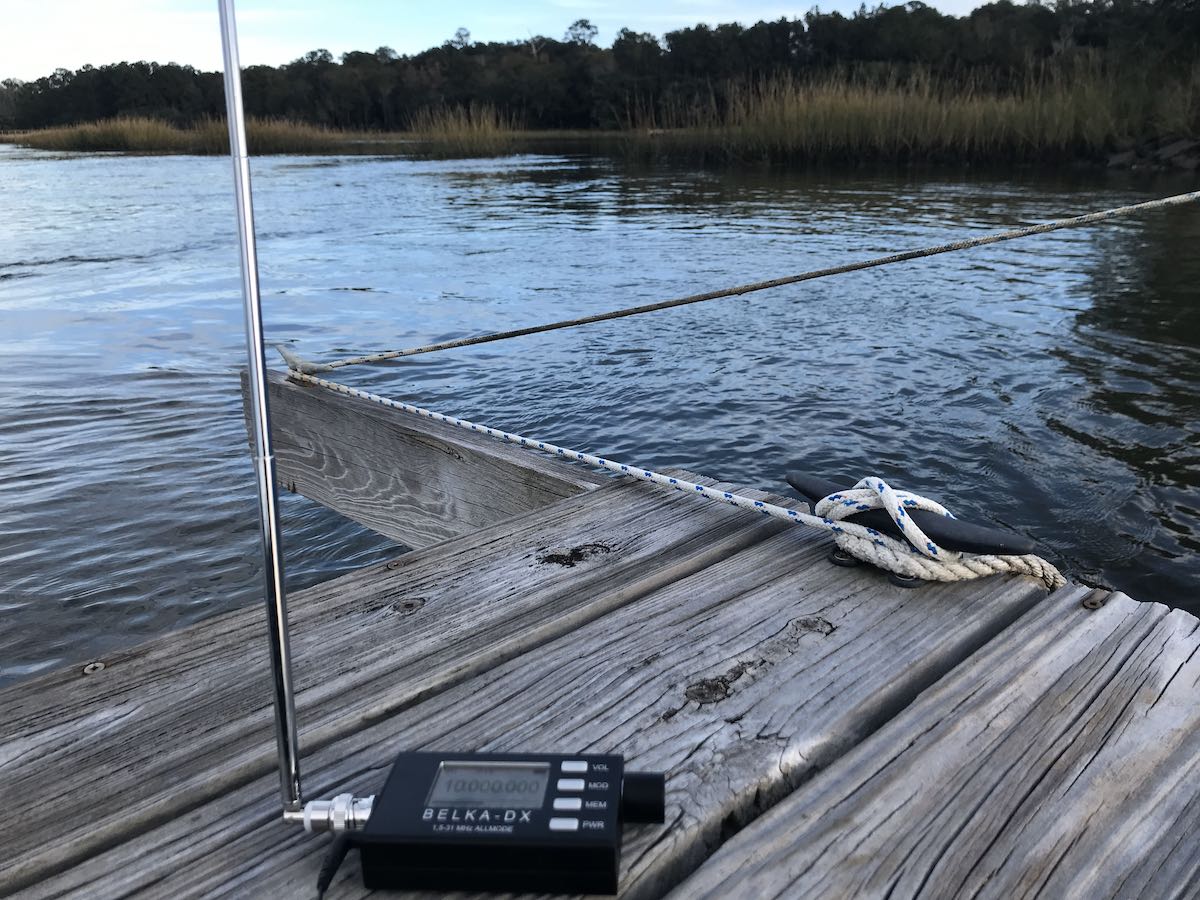 I’ve been on the coast of South Carolina enjoying a little R&R with my wonderful family.
I’ve been on the coast of South Carolina enjoying a little R&R with my wonderful family.
We rented a vacation home on a tidal river just south of Charleston, SC and it was just what the doctor ordered. The location was gorgeous, the weather was amazing, and there was very little RF interference outside our home.
The best part? We had full access to a private dock.
I took a few portable radios on vacation (ahem…obviously!) but I so thoroughly enjoyed my time with the Belka-DX.
If you haven’t gathered already, I really appreciate simple radios for field operation and it doesn’t get much more simple than the Belka-DX or Belka-DSP.
The radio is so incredibly compact, durable, and a pleasure to operate–especially if cruising the broadcast bands.
On the dock, I didn’t have a place to easily hang a wire antenna, so I used the supplied telescoping whip antenna. It served me well on a number of listening sessions.
As 13dka pointed out in his brilliant review of the Belka-DSP, the Belka radios are so compact, yet pack so much performance, they smack of a little spy radio! On top of that, the chassis is incredibly durable. I can’t tell you how much I love this. My Belka receiver has been living in my EDC bag in a small zippered pouch.
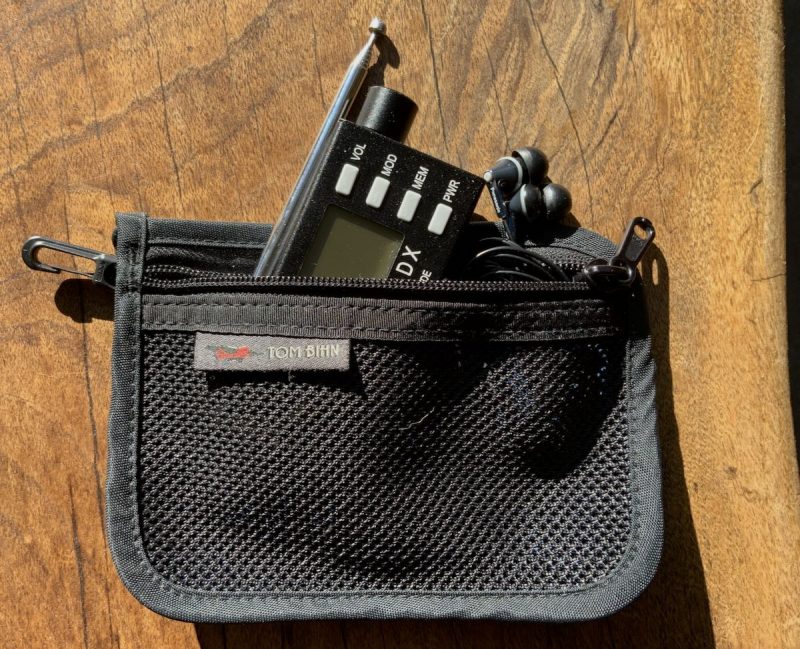 I barely notice it in my bag–it take up almost no space and weighs so little–but in the back of my mind I know I have a portable DXing machine everywhere I go.
I barely notice it in my bag–it take up almost no space and weighs so little–but in the back of my mind I know I have a portable DXing machine everywhere I go.
I have no fear of being damaged in my bag, either–the chassis protects it so well.
 Since London Shortwave has sorted out how to make spectrum recordings using the Belka-DX I/Q out, you’d better believe I’ll be sampling spectrum as I travel the globe post-pandemic!
Since London Shortwave has sorted out how to make spectrum recordings using the Belka-DX I/Q out, you’d better believe I’ll be sampling spectrum as I travel the globe post-pandemic!
I didn’t have time to gather what I needed for making Belka-DX spectrum recordings on this trip, but you can be certain I will when I return!
I should add that one of the little joys about my dockside DXing spot this past week was watching dolphins swim by as I tuned to some of my favorite broadcasters. Bliss.
Post readers: Have you taken your radios on vacation recently? Please comment! Better yet, consider submitting a guest post with photos!

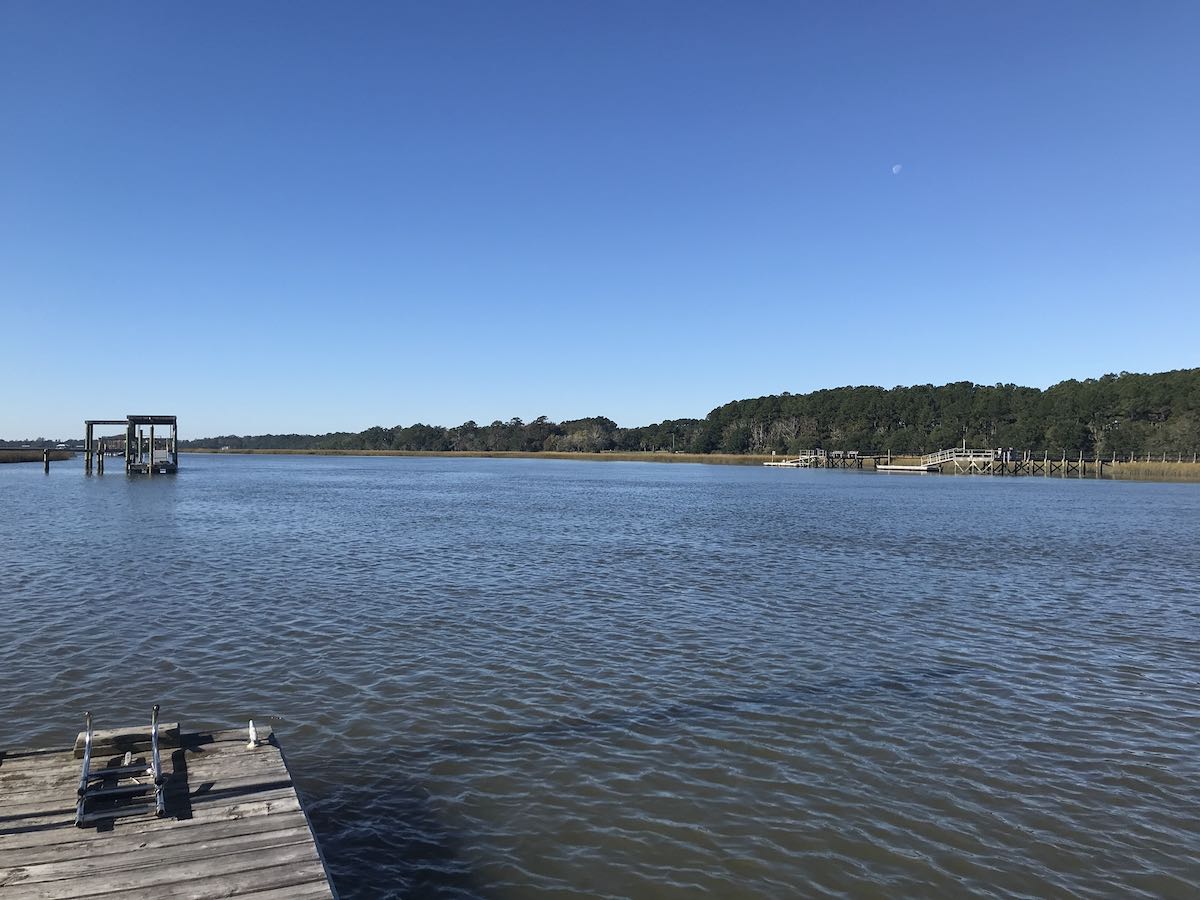
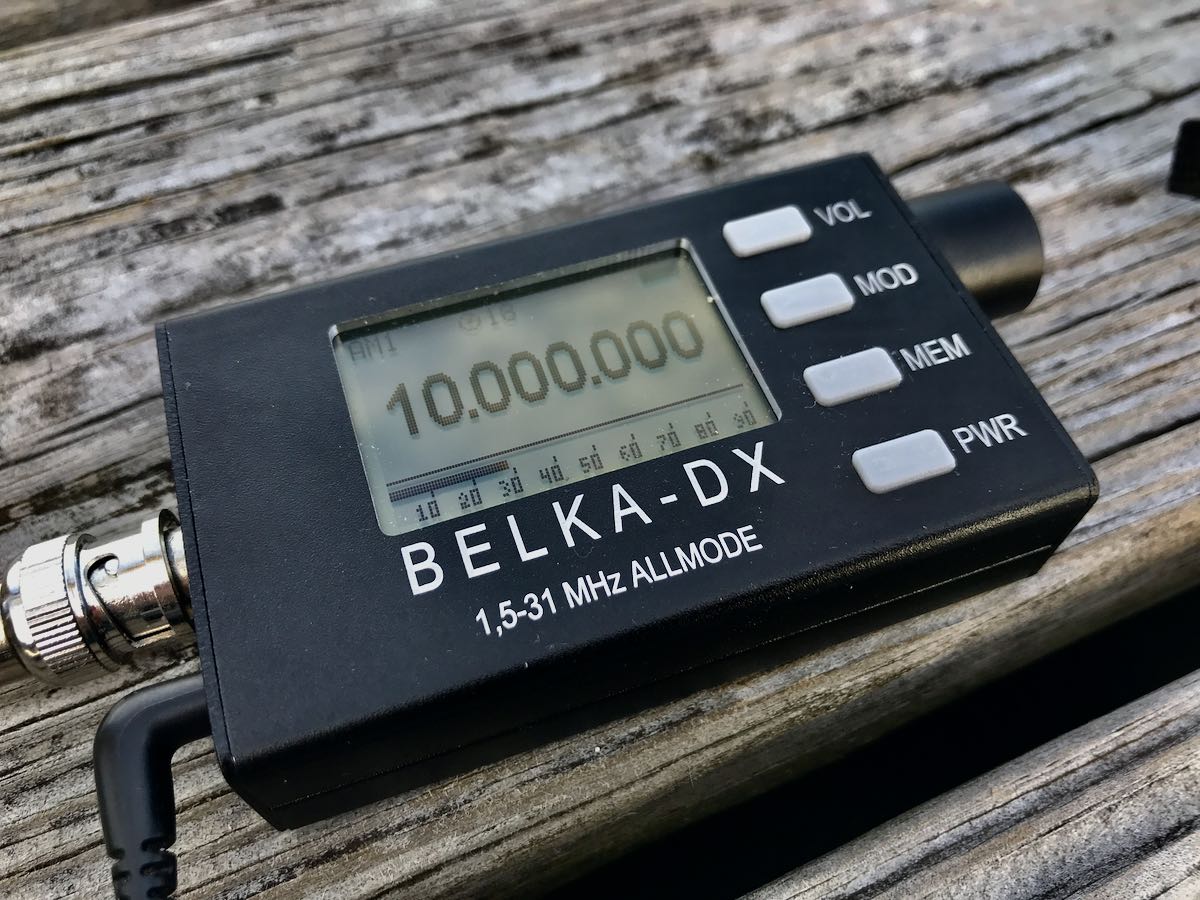
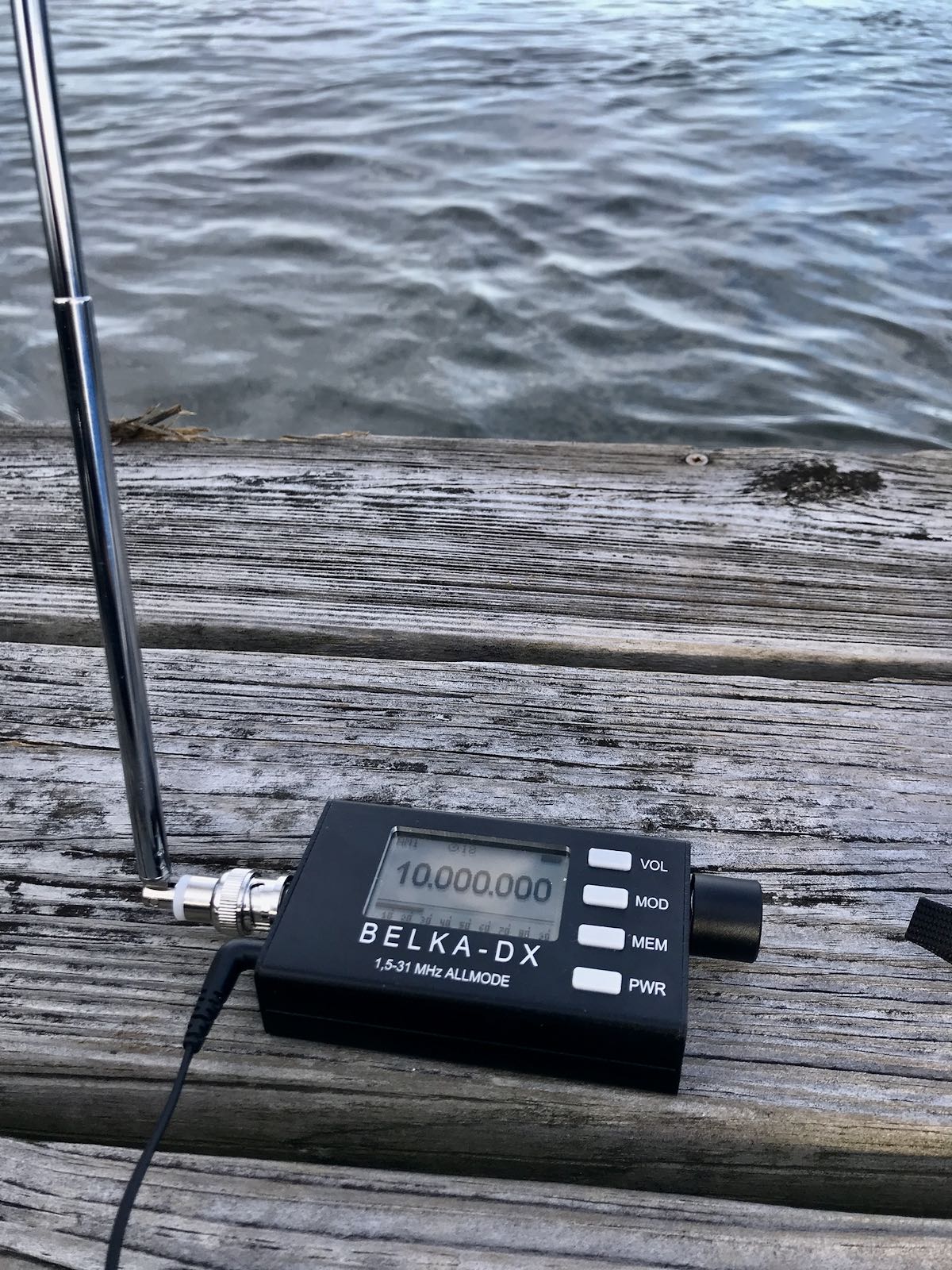
I could not put us with the hissy sound for more than a couple minutes…….sorry
With the internal speaker or headphones?
Headphones. Though a speaker is incoming!
Thomas,
Other than frequency coverage, what’s the difference between the Belka-DX and the Belka-DSP? Somehow I missed that with all the detailed comments.
Dan…
VR2HF
Dan, the main differences between Belka DX and Belka DSP see here:
– Frequency range: 1.5 to 31 MHz;
– Maximum sensitivity over the entire range due to the tunable input preselector;
– IQ output for viewing panorama on a computer;
– Built-in speaker (only for Belka DX).
Alex
EU1ME
I have a belka dx on the way and would appreciate advice on a speaker to purchase. Also how can I connect a 3.5 plug anteanna. Thank you very much for any info.
Anybody know what the antenna impedance is for the Belka DX?
Belka DX impedance is higher than 10 kOhm
Alex
EU1ME
This is a brilliant creation !!!! My suggestion for the future evolution of this receiver would be to consider a design similar to the Sony SW-100 housing so the battery could be enlarged and the space to allow a further expansion of a module for DRM, FM and Air bands.
Just a comment on a vacation in Suttons Bay, Michigan during November, 2020. I brought a brand new CCrane CCRadio-EP Pro. I listened to AM the first night and captured my top 5 AM stations from the Detroit area. WJR 760 AM, CKLW 800 AM (Windsor, Canada), WWJ- 950 AM, WXYZ-1270 AM, WDTK-1400 AM. I realize that 270 miles isn’t a long haul for AM, and the conditions may have been favorable, but I enjoyed the evening. The radio is reasonably priced and a good performer.
Took a Grundig G3, YouLoop, and MFJ-16010 tuner to the East Tennessee mountains awhile back. I did not spend much time with it, but I did listen to some South American broadcasting, amateur voice comms, and logged a local longwave airport beacon. I suppose not too bad for a just a YouLoop hanging in a seriously RF-noisy hotel room window.
The YouLoop apparently has a horrid mismatch with my G3 portable. It does seem to have enough signal transfer when improving the match with a tuner. The small MFJ-16010 is just a basic L-match, so I had to swap the input and outputs depending upon the tuning range. Anyway, it sufficed for my purposes.
I posted a NanoVNA sweep of the YouLoop at HFU here:
https://www.hfunderground.com/board/index.php/topic,71326.msg241978.html
Further down the same thread is a sweep tuned with the MFJ-16010 to around 3.75MHz. As I said there, “Yes the absolute SNR is essentially the same, of course, but the little G3 portable has usable signal transfer now. Yay!” “:)
—————-
BTW, I suspect a YouLoop “as is” might work nicely with the Belka-DX given it seems to have rather hot frontend sensitivity even on its bundled telescopic whip.
Yes the Belka does work with the YouLoop but that combination only makes sense in the presence of local noise. Without noise, the whip will beat the YouLoop particularly on higher frequencies. I don’t know any other radio that’s matched so extremely to short whips, including all of my other portables.
Agreed, the BDX works well with the whip (and I’ve tried w the Youloop as well, signal strength noticeably lower), I have found a 20-30 foot length of wire connected via 1:9 balun increases the signal strength by a small but definite amount but readability doesn’t really improve over the whip.
Re robustness: the metal case helps but I suspect the weakest point is the encoder so it would probably be wise to protect that when packing so there is no undue force applied to the tuning knob. The cut-out foam insert the radio ships with can be recycled to help with that.
Dave.
here’s an idea for your “belka bag”
pick the following:
a legth of thin coax with BNC connectors
a nooelec balun
a sma to bnc adapter for the balun
a box to host the balun
two wire clamps to connect wires to the balun
a lenght of speaker wire with spade connectors at both ends, make two spools of it (black and red)
fix the wire connectors to the box, insert the balun and use two short wires to connect it to the connectors, add the sma to bnc and close the box
put everything in your bag (won’t take much space) and when you’ll be wherever…
connect the coax to the belka and to the balun box and then use the wires to put together whatever antenna may fit, be it a loop, a randomwire with counterpoise or a dipole, and there you go
in your case you could have laid down a loop on ground on the wooden dock 😀
Great suggestions!